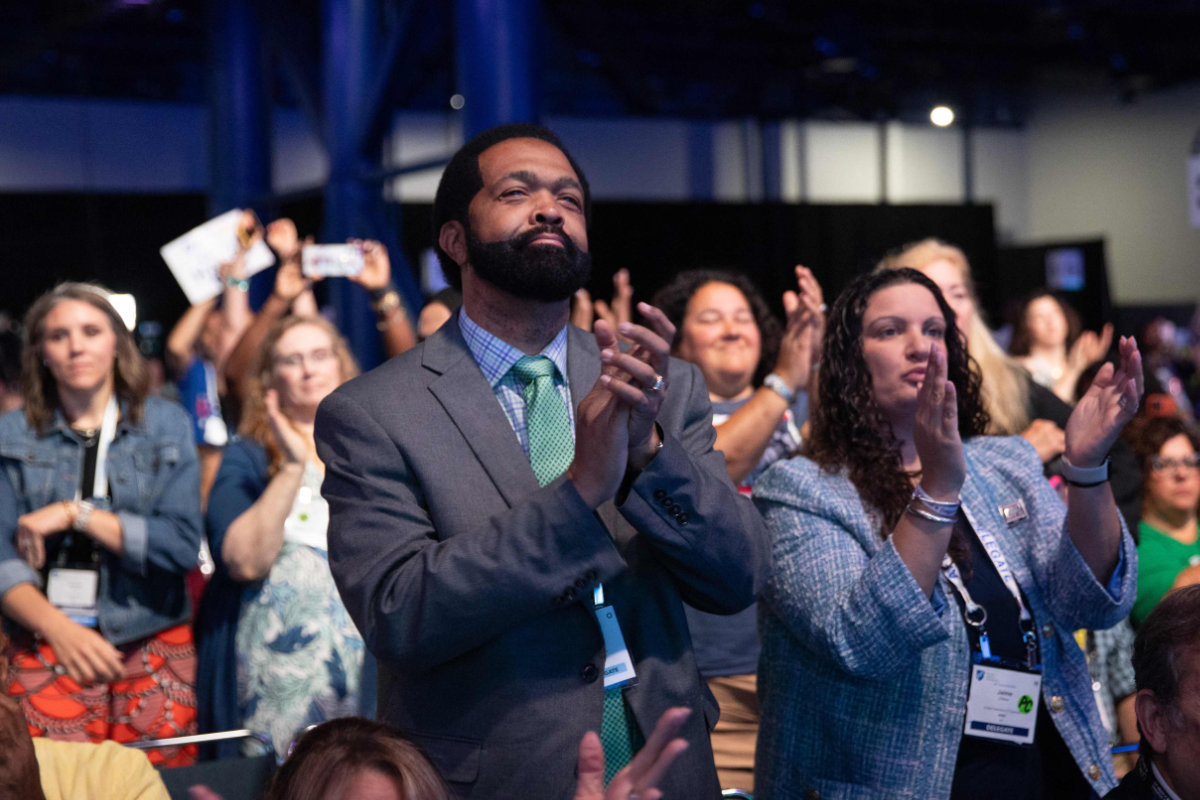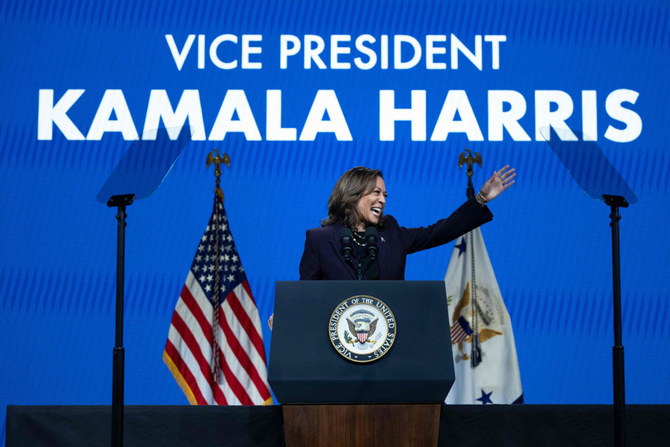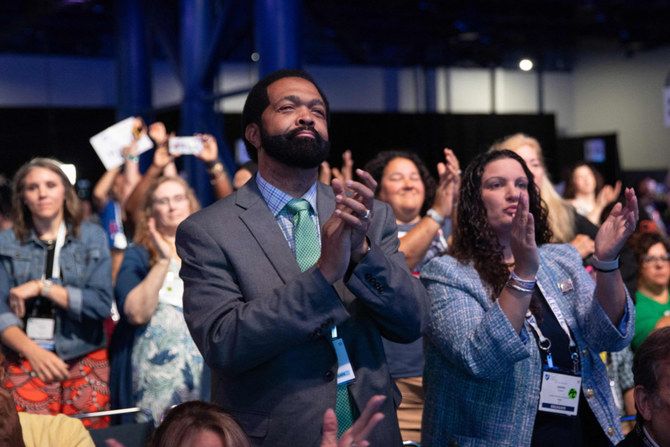HOUSTON, Texas: Vice President Kamala Harris took her presidential campaign blitz to the largest US teachers’ union on Thursday, promising a “fight for the future” as new opinion polls showed her narrowing the gap with Republican rival Donald Trump.
Harris’ swift emergence as the successor to President Joe Biden, 81, as the Democratic presidential candidate in the Nov. 5 election has shaken up a stagnant presidential race, with polls showing her narrowing former President Trump’s advantage.
In an address in Houston to the American Federation of Teachers, Harris, 59, focused on economic policy and workers’ rights, touting plans for affordable health care and child care and criticizing Republicans for blocking gun limits in the wake of school shootings.
“Ours is a fight for the future,” Harris told a crowd of about 3,500 people. “We are in a fight for our most fundamental freedoms. And to this room of leaders, I say: Bring it on.”
A series of polls conducted since Biden ended his reelection bid on Sunday, including one by Reuters/Ipsos, show Harris and Trump beginning their head-to-head contest on roughly equal footing, setting the stage for a close-fought campaign over the next three-and-a-half months.

Attendees hold signs supporting Vice President Kamala Harris at the American Federation of Teachers' 88th National Convention on July 25, 2024 in Houston, Texas. (Getty Images/AFP)
A New York Times/Siena College national poll published Thursday found Harris has narrowed what had been a sizable Trump lead. Trump was ahead of Harris 48 percent to 46 percent among registered voters, compared with a lead of 49 percent to 41 percent over Biden in early July, following Biden’s disastrous debate performance that led to a wave of Democratic calls for him to step aside as candidate.
While nationwide surveys give important signals of American support for political candidates, a handful of competitive states typically tilt the balance in the US Electoral College, which ultimately decides who wins a presidential election.
Harris also got good news on that front as Emerson College/The Hill published a poll finding that she had begun to close the gap with Trump in five critical battleground states: Arizona, Georgia, Michigan, Pennsylvania and Wisconsin. Trump still narrowly leads Harris in all but Wisconsin, which is tied, according to the poll of registered voters in those states.
Together, the polls suggest that while Trump, 78, retains a narrow advantage, he has not seen the sort of bump in support following last week’s Republican National Convention that candidates hope to get out of the highly scripted, televised and expensive events.
Trump on Wednesday night laid into Harris in his first rally since she replaced Biden atop the ticket, then continued his criticism online on Thursday.
“We’re not ready for a Marxist President, and Lyin’ Kamala Harris is a RADICAL LEFT MARXIST, AND WORSE!” Trump posted on his social media platform.
Debate up in the air
Trump’s campaign on Thursday cast doubt about a Sept. 10 debate that had been previously scheduled against Biden. Harris has said she is prepared to debate Trump that day, but the Trump campaign said in a statement that debate details cannot be finalized until the Democrats formally name a candidate, which could happen the first week of August.
“It would be inappropriate to schedule things with Harris because Democrats very well could still change their minds,” Steven Cheung, the Trump campaign communications director.
More than 40 former US Justice Department officials, primarily from Democratic administrations, signed a letter endorsing Harris and calling Trump a threat to the rule of law in the US.
“Former President Trump presents a grave risk to our country, our global alliances and the future of democracy. As President, he regularly ignored the rule of law,” reads the letter, a copy of which was seen by Reuters and signed by former US Attorney General Loretta Lynch and other former officials.
Former President Barack Obama has been in regular contact with Harris and plans to soon endorse her as the Democratic presidential candidate, a source familiar with his plans said on Thursday.
The Harris campaign released its first video advertisement online on Thursday. Harris narrates the ad, framing the campaign as a battle to protect Americans’ individual liberties to the sound of Beyonce’s song “Freedom.”
Harris also reached out to younger voters by creating an account on TikTok, amassing over 500,000 followers in a few hours.

The next highly anticipated development will be Harris’ choice of a vice presidential candidate to counter Trump’s selection of US Senator JD Vance of Ohio.
The list of contenders amounts to a who’s-who of rising Democrats, including US Senator Mark Kelly of Arizona, Governors Josh Shapiro of Pennsylvania, Roy Cooper of North Carolina and Andy Beshear of Kentucky, as well as Transportation Secretary Pete Buttigieg.
Harris’ rise has largely pushed Trump out of the headlines, a week after the Republican National Convention and 12 days after he narrowly survived an assassination attempt that wounded his ear.
FBI Director Christopher Wray told a House panel on Wednesday that investigators are not certain whether Trump’s injury was caused by a bullet or by shrapnel. Trump has said a bullet hit his ear.
A Trump campaign spokesperson, Jason Miller, called the idea that Trump was not hit by a bullet a “conspiracy,” adding an expletive.


























